Hey, travel enthusiasts! Have you ever thought about carrying a piece of India’s timeless weaving tradition with you on your journeys? Well, that’s exactly what happens when the iconic handwoven Pochampally fabric meets modern travel accessories.
Pochampally Ikat, woven in Telangana, is world-renowned for its intricate dyeing technique and vibrant geometric patterns. For centuries, this fabric has adorned sarees and traditional garments.
But today, it’s being reimagined into stylish, durable, and functional travel gear. The result? Accessories that are not just useful but also carry a cultural flair wherever you go.
So, let’s explore how Pochampally fabric is traveling beyond wardrobes and becoming a global companion in modern journeys.
The Timeless Beauty of Pochampally Ikat
Textiles are not just fabrics—they are cultural passports. The handwoven Pochampally Ikat holds a very special one. Originating from Bhoodan Pochampally village in Telangana, this weave is often called the “Silk City of India.” Its magic lies in the unique ikat dyeing process where threads are resist-dyed before weaving, resulting in precise, striking patterns that feel almost like visual poetry.
Traditionally, these patterns decorated sarees worn during weddings and festivals, known for their bold colors and mesmerizing symmetry. But today, the same artistry has found a new home: travel accessories.
From laptop sleeves to trolley bags, Handwoven Pochampally is no longer restricted to closets—it’s now part of how people move, explore, and express themselves.
The Journey of Pochampally: From Loom to Luggage
The transformation of Pochampally fabric from traditional sarees to modern travel gear is nothing short of fascinating. Let’s walk through this journey step by step—seeing how heritage handloom slowly found its way into stylish backpacks, duffels, and laptop sleeves.
1. Origins and Cultural Roots
🌸 The Birthplace of Pochampally Ikat
- Telangana’s Gem: The weaving tradition traces back to the quaint town of Pochampally in Telangana, where clusters of artisan families have been handweaving for generations.
- Village Weavers: Every household once had a loom, making the art not just a profession but a way of living.
🌍 Ancient Influences and Adaptations
- Cross-Cultural Exchange: Ikat weaving is believed to have traveled from Southeast Asia and Central Asia, but in Handwoven Pochampally, it gained its own identity.
- Local Identity: Unlike other regions, Pochampally artisans tied and dyed yarns before weaving, a method that shaped India’s unique double Ikat legacy.
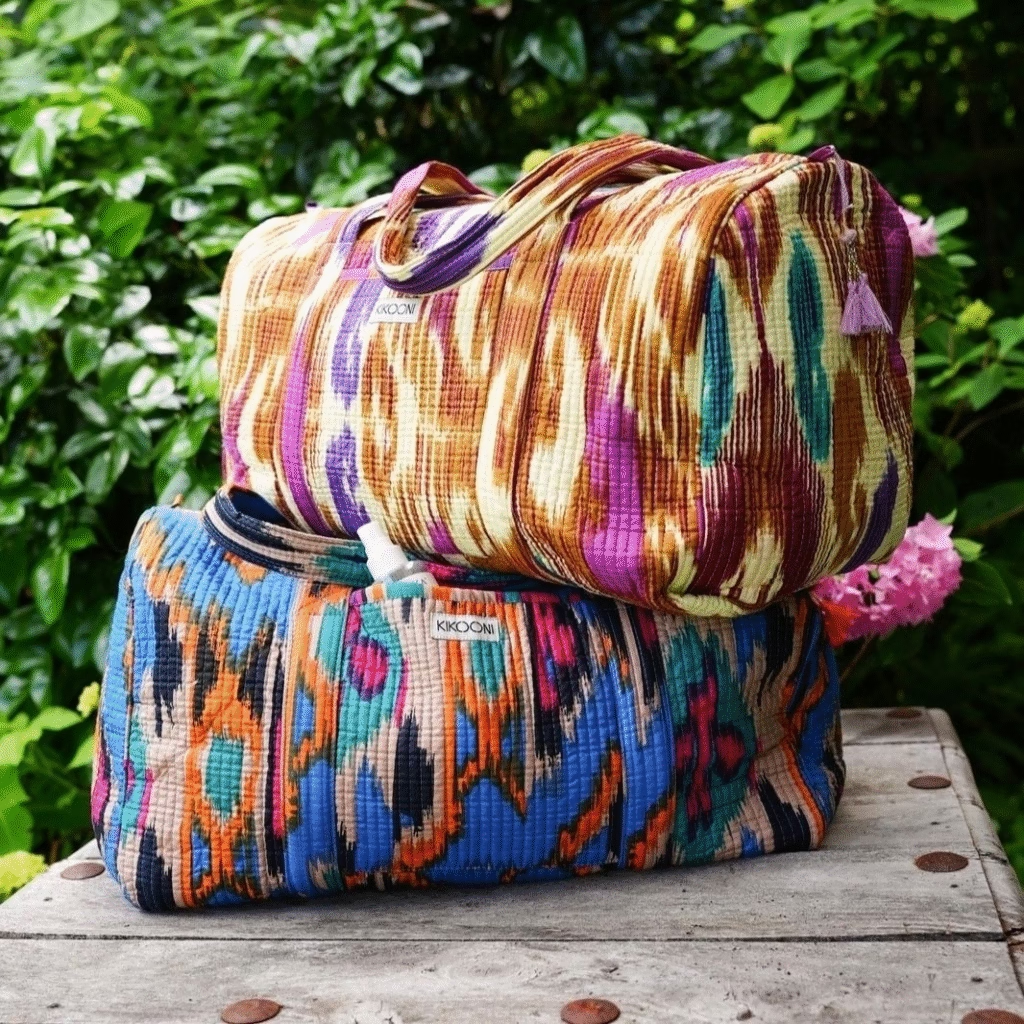
Symbols and Motifs:
When we think of travel accessories—backpacks, duffels, laptop sleeves—we usually picture them in plain leather, canvas, or synthetic materials. But imagine these same accessories enriched with centuries-old patterns, handwoven into every thread.
That’s exactly what Pochampally Ikat brings. Its symbols and motifs aren’t just designs—they’re cultural whispers stitched into modern-day travel gear.
1. Geometric Harmony: The Signature of Pochampally
- Diamond Motif (Chowka or “Chowkadi”)
- The diamond is perhaps the most recognizable symbol in Pochampally Ikat.
- Represents balance, symmetry, and protection.
- On travel bags, diamonds appear in repeated patterns—almost like shields—conveying strength and stability, perfect for journeys.
- The diamond is perhaps the most recognizable symbol in Pochampally Ikat.
- Chevron and Zig-Zag Patterns
- These angular designs symbolize movement and rhythm.
- Ideal for travel accessories, they echo the idea of motion and adventure.
- When used on duffels or slings, they visually express the energy of travel.
- These angular designs symbolize movement and rhythm.
- Stripes and Checks
- Clean, linear arrangements that signify order and clarity.
- Often used in minimalist bags, giving them a modern yet heritage-inspired edge.
- The checks, in particular, add structure—both visually and symbolically.
- Clean, linear arrangements that signify order and clarity.
2. Nature-Inspired Motifs: A Nod to Roots
- Floral Patterns
- Flowers in Handwoven Pochampally Ikat stand for renewal and growth.
- On accessories, these motifs subtly remind travelers to embrace new beginnings.
- Muted floral motifs on laptop sleeves or pouches bring a softer, balanced charm.
- Flowers in Handwoven Pochampally Ikat stand for renewal and growth.
- Leaf and Creeper Motifs
- Long, trailing vine-like designs represent continuity and resilience.
- They’re often woven along borders, which translate beautifully into bag straps or trims.
- Carrying such motifs on a travel accessory feels like carrying a touch of nature along the way.
- Long, trailing vine-like designs represent continuity and resilience.
- Bird Motifs (Stylized Parrots or Peacocks)
- Birds symbolize freedom and exploration—perfectly aligned with the spirit of travel.
- Small, repeated bird motifs on backpacks make them both playful and meaningful.
- The peacock, in particular, adds a touch of grandeur when woven into larger panels.
- Birds symbolize freedom and exploration—perfectly aligned with the spirit of travel.
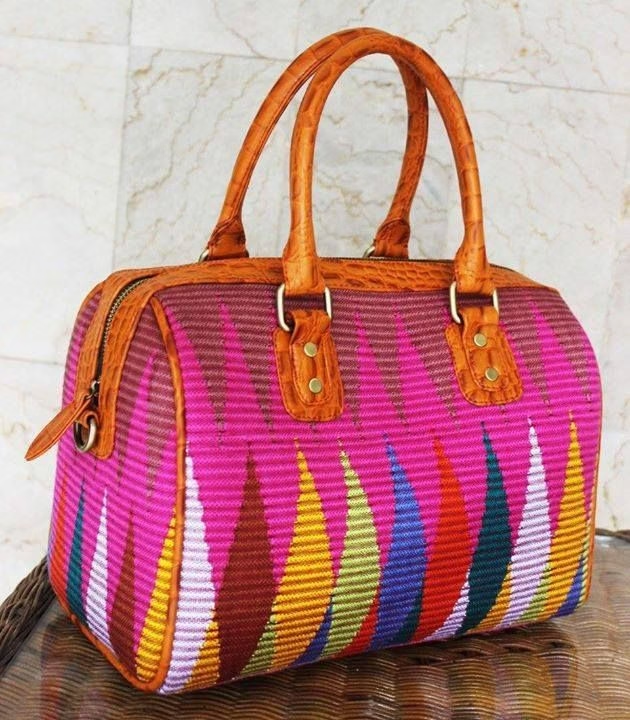
3. Spiritual and Cultural Motifs: Threads of Belief
- Temple Motifs (Gopuram Shapes)
- Inspired by temple architecture, these motifs symbolize protection and sacred journeys.
- On travel gear, they act as cultural emblems, connecting modern accessories to spiritual roots.
- Inspired by temple architecture, these motifs symbolize protection and sacred journeys.
- Circular Patterns (Mandala-like Weaves)
- Circles represent cycles, unity, and wholeness.
- In travel accessories, they remind us of life’s continuous journey and interconnectedness.
- Circles represent cycles, unity, and wholeness.
- Symbolic Grids
- Resembling cosmic diagrams, these woven grids are linked to harmony and cosmic balance.
- Perfectly suited for structured items like laptop sleeves or organizers.
- Resembling cosmic diagrams, these woven grids are linked to harmony and cosmic balance.
4. Why These Motifs Matter in Travel Accessories
- Heritage in Motion
- Every motif tells a story—from symmetry to spirituality—and transforms accessories into moving canvases of culture.
- Every motif tells a story—from symmetry to spirituality—and transforms accessories into moving canvases of culture.
- Emotional Connection
- Travelers aren’t just carrying a bag; they are carrying fragments of history, art, and meaning.
- Travelers aren’t just carrying a bag; they are carrying fragments of history, art, and meaning.
- Modern Meets Traditional
- Symbols that once adorned sarees now live on backpacks and pouches, making heritage relevant for today’s lifestyle.
Materials and Steps in Handwoven Pochampally Fabric
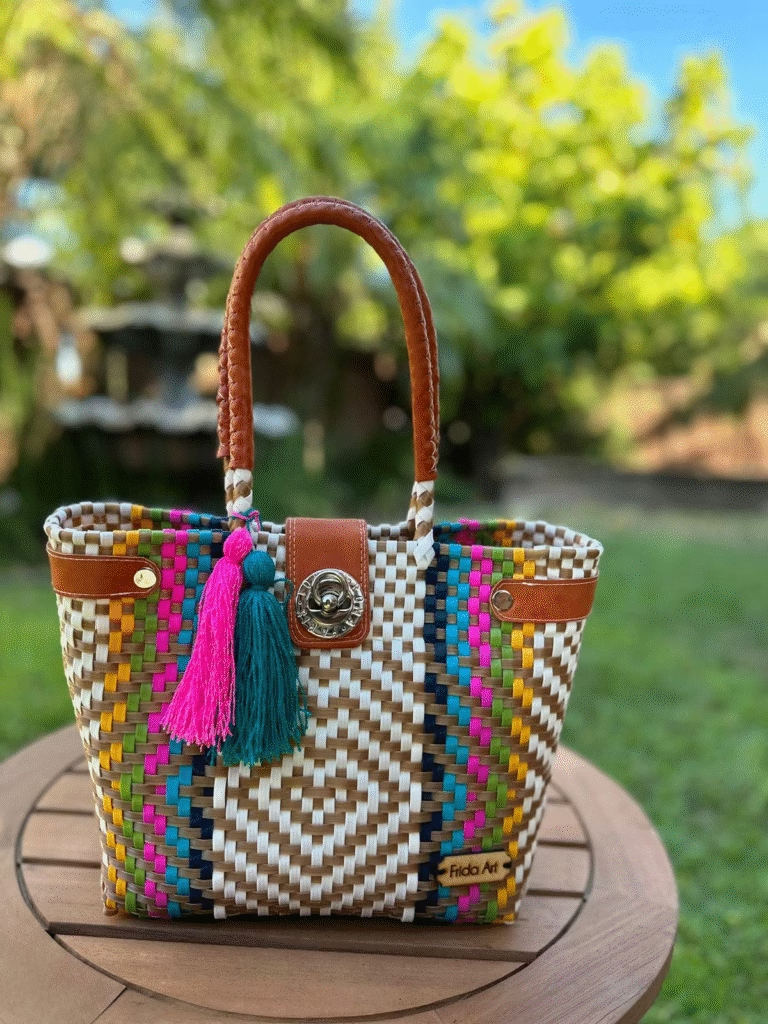
1. Materials Used in Handwoven Pochampally Fabric
Pochampally Ikat stands out because of its durability, vibrant colors, and timeless appeal. The choice of material plays a big role in shaping its texture and strength—perfect for accessories that are meant to last.
- Cotton
- One of the oldest and most widely used materials for Pochampally weaving.
- Soft, breathable, and highly durable—making it suitable for everyday bags and pouches.
- Cotton yarn also absorbs dyes well, which helps in achieving rich Ikat patterns.
- One of the oldest and most widely used materials for Pochampally weaving.
- Silk
- Silk Pochampally is luxurious, lustrous, and elegant.
- Traditionally used in sarees, but now reimagined for premium travel items like wallets or clutches.
- Blending silk with cotton is also common, creating fabrics that are both strong and stylish.
- Silk Pochampally is luxurious, lustrous, and elegant.
- Cotton-Silk Blends
- A balanced mix of durability and sheen.
- Popular in modern accessory-making as it keeps the strength of cotton and the charm of silk.
- These blends are lightweight yet long-lasting, making them practical for travel.
- A balanced mix of durability and sheen.
- Natural Dyes and Organic Colors
- Colors in Pochampally are derived from vegetable, plant-based, and eco-friendly sources.
- These dyes give earthy yet vibrant tones, from indigo blues to fiery reds.
- Sustainable and non-toxic, they add an eco-conscious appeal to the fabric.
- Colors in Pochampally are derived from vegetable, plant-based, and eco-friendly sources.
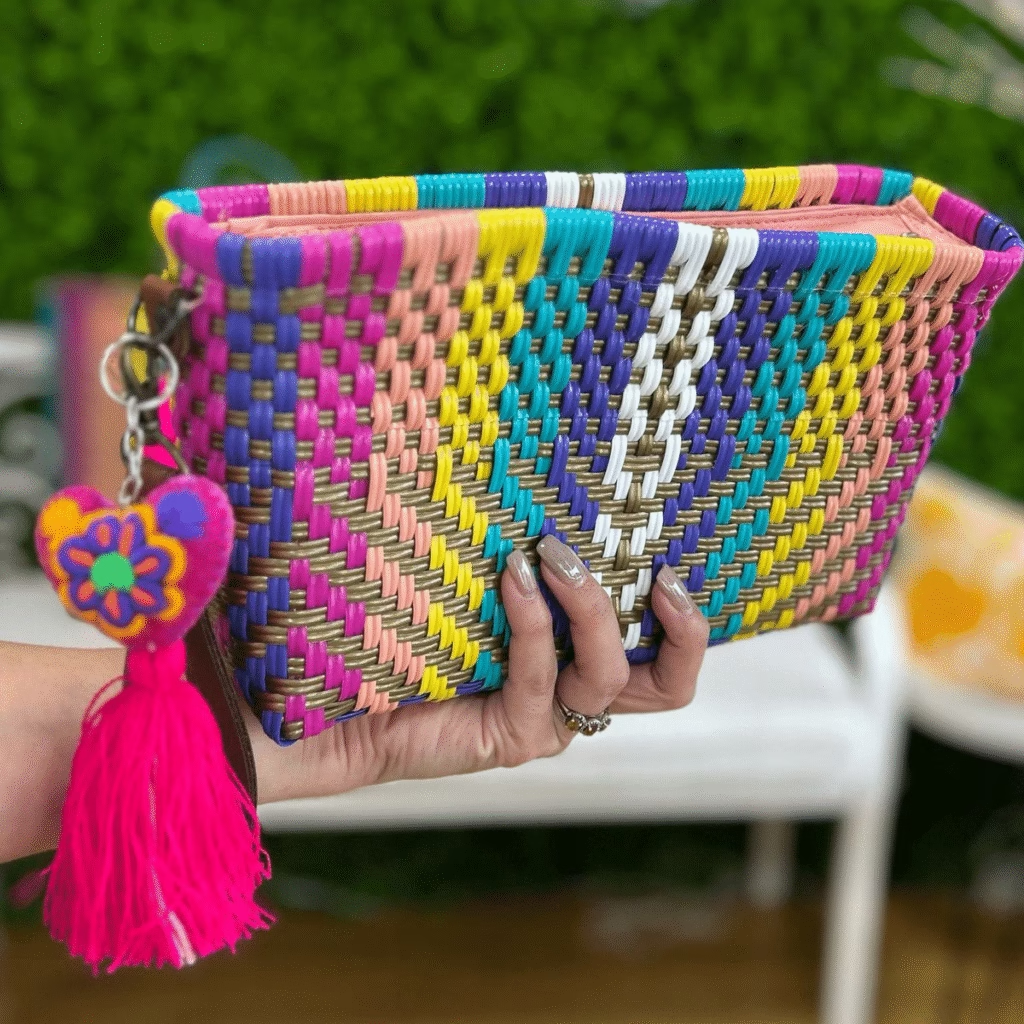
2. Steps in Making Pochampally Fabric
The making of Pochampally Ikat is no less than magic. Unlike other fabrics where the pattern is added after weaving, here the design is first dyed into the yarn and then woven—a technique that requires immense skill and precision.
Step 1: Preparing the Yarn
- Cotton or silk yarns are first sourced and cleaned.
- The yarn is stretched, combed, and arranged into bundles for dyeing.
- At this stage, the weaver already has a vision of the design in mind.
Step 2: Tying the Yarn (The Ikat Technique)
- This is what makes Pochampally special. The yarn is tightly tied at certain intervals with a protective material (like rubber or cotton thread).
- These tied sections resist dye, creating blank spaces that will later form the intricate patterns.
- The process requires mathematical precision so that the motifs align perfectly during weaving.
Step 3: Dyeing the Yarn
- The tied yarn bundles are dipped into natural or synthetic dyes.
- After one round of dyeing, the yarn is dried, untied partially, and re-tied again for the next color.
- This step is repeated multiple times to achieve multi-colored patterns.
- The patience here is extraordinary—sometimes it takes days just to dye one set of yarn.
Step 4: Preparing the Loom
- Once dyed, the yarn is carefully aligned on traditional handlooms.
- Both warp (vertical threads) and weft (horizontal threads) are arranged to match the pre-dyed design.
- This step is like solving a puzzle—if even one thread is misaligned, the whole pattern shifts.
Step 5: Weaving the Fabric
- Skilled artisans interlace the warp and weft threads to bring the patterns to life.
- Each shuttle movement creates symmetry, slowly revealing diamonds, zigzags, or temple motifs.
- A single saree-length weave can take up to 10–15 days, depending on the complexity. – That’s hy it’s called Handwoven Pochampally
Step 6: Finishing Touches
- After weaving, the fabric is washed, dried, and polished.
- It is then cut and tailored into different forms—sarees traditionally, and now modern accessories.
- For travel gear, the woven fabric is stitched onto durable bases like canvas or leather to enhance strength.
3. Why This Matters for Travel Accessories
- Durability: Strong cotton and cotton-silk blends ensure the fabric can withstand daily use.
- Uniqueness: Each travel accessory carries a handwoven pattern—no two pieces are ever exactly alike.
- Sustainability: Natural dyes and eco-friendly weaving methods make them better for the planet.
- Cultural Value: Carrying a Pochampally bag means carrying centuries of tradition with you, wherever you travel.
Travel Accessories Reimagined in Pochampally
Here’s where things get exciting. Imagine your daily travel gear—but with a touch of heritage.
- Backpacks: Sturdy, handwoven fabric makes stylish backpacks that are perfect for short trips or college use.
- Duffel Bags: Whether it’s a gym visit or a weekend getaway, a Pochampally duffel blends utility with elegance.
- Laptop Sleeves: Protect your gadgets in sleeves that scream culture-meets-modernity.
- Wallets & Pouches: Small but striking, these carry the same bold ikat motifs and become instant conversation starters.
- Trolley Bag Panels: Some designers are even using Pochampally fabric as accents on rolling suitcases—combining durability with design.
Each piece feels less like an accessory and more like a moving canvas of Indian tradition.
The Future and Statics in Pochampally
To truly understand where it stands today and where it is heading, we need to look at two things: the statistics of the industry now and the possibilities for its future. Let’s explore both in detail!
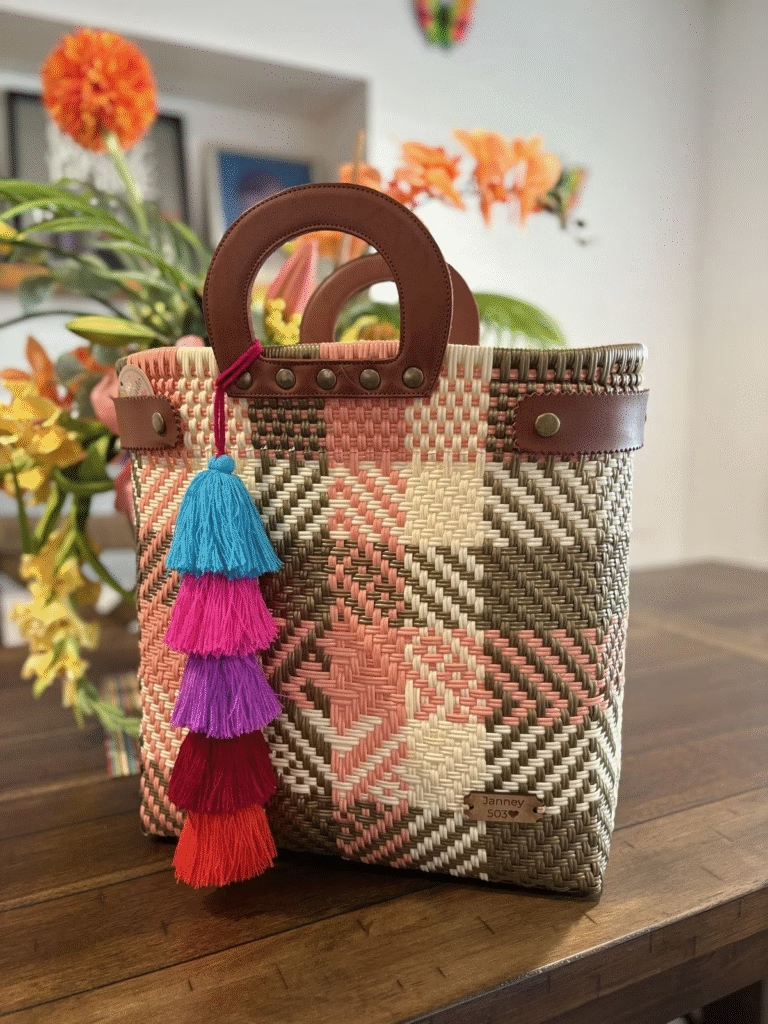
A Heritage with Numbers Behind It
- Weavers and Families
- Around 10,000 weaver families in and around Pochampally are engaged in this craft.
- These families live in weaving clusters spread across Telangana, especially in Nalgonda and Yadadri districts.
- Around 10,000 weaver families in and around Pochampally are engaged in this craft.
- Employment Impact
- Nearly 80% of households in Pochampally depend directly on weaving as their livelihood.
- Both men and women are equally involved—men usually handle loom weaving while women contribute to dyeing, tying, and finishing.
- Nearly 80% of households in Pochampally depend directly on weaving as their livelihood.
- Production Capacity
- On average, a weaver takes 7–15 days to complete one saree, depending on its complexity.
- Every year, lakhs of meters of Pochampally Ikat fabric are woven and sold, not only in India but also exported abroad.
- On average, a weaver takes 7–15 days to complete one saree, depending on its complexity.
- Market Reach
- Today, Pochampally products reach over 20 countries, including the USA, Japan, and European markets.
- The annual turnover of Pochampally weaving industry is estimated in hundreds of crores, proving its growing demand.
- Today, Pochampally products reach over 20 countries, including the USA, Japan, and European markets.
2. The Future of Pochampally
Expanding Beyond Sarees
- Traditionally, Pochampally Ikat was mostly used for sarees.
- But now, designers are using it in:
- Travel accessories like duffel bags and laptop sleeves.
- Fashion products like jackets, stoles, and footwear.
- Home décor like cushion covers, curtains, and upholstery.
- Travel accessories like duffel bags and laptop sleeves.
- This diversification ensures the craft adapts to changing lifestyles.
Technology Meets Tradition
- E-commerce platforms are opening new doors for weavers.
- Handloom clusters are being digitally mapped so buyers can connect directly with artisans.
- Online exhibitions and global marketplaces are helping Pochampally fabrics reach customers who earlier had no access.
Government and GI Tag Support
- Handwoven Pochampally Ikat received a Geographical Indication (GI) tag in 2005, which protects its identity.
- Government schemes like Handloom Weavers’ Comprehensive Welfare Scheme and Skill Upgradation Programs are strengthening the industry.
- With these efforts, the future looks more structured and supportive for younger generations to continue weaving.
Sustainability as a Strong Card
- In a world where people care about eco-friendly products, Pochampally has a natural advantage:
- Use of organic cotton and natural dyes.
- Zero reliance on factory-based mass production.
- Use of organic cotton and natural dyes.
- This sustainable story makes it attractive for global conscious buyers.
Youth and Design Innovation
- Younger generations of weavers are experimenting with new colors, geometric variations, and even blending Pochampally with other fabrics.
- Fashion schools and collaborations with designers ensure the craft keeps evolving with time.
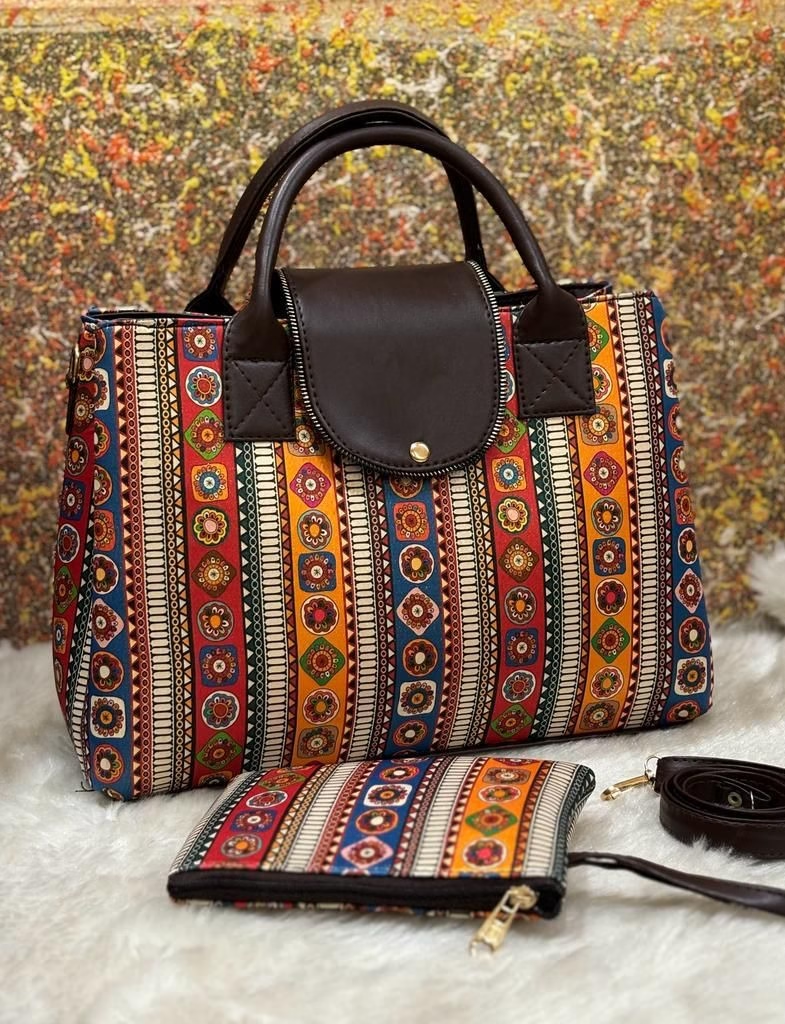
The Bottom Line
Handwoven Pochampally fabric in travel accessories is more than fashion—it’s heritage on the move. It bridges generations, regions, and lifestyles.
So, next time you pack for a trip, why not let your bag be more than just storage? Let it be a conversation, a memory, a piece of India you proudly carry across borders.
Who knows? Your next travel story might just begin with someone asking, “Wow, where did you get that bag?”
Also Read – Bhil Art on Canvas Bags: From Village Walls to Designer Boutiques

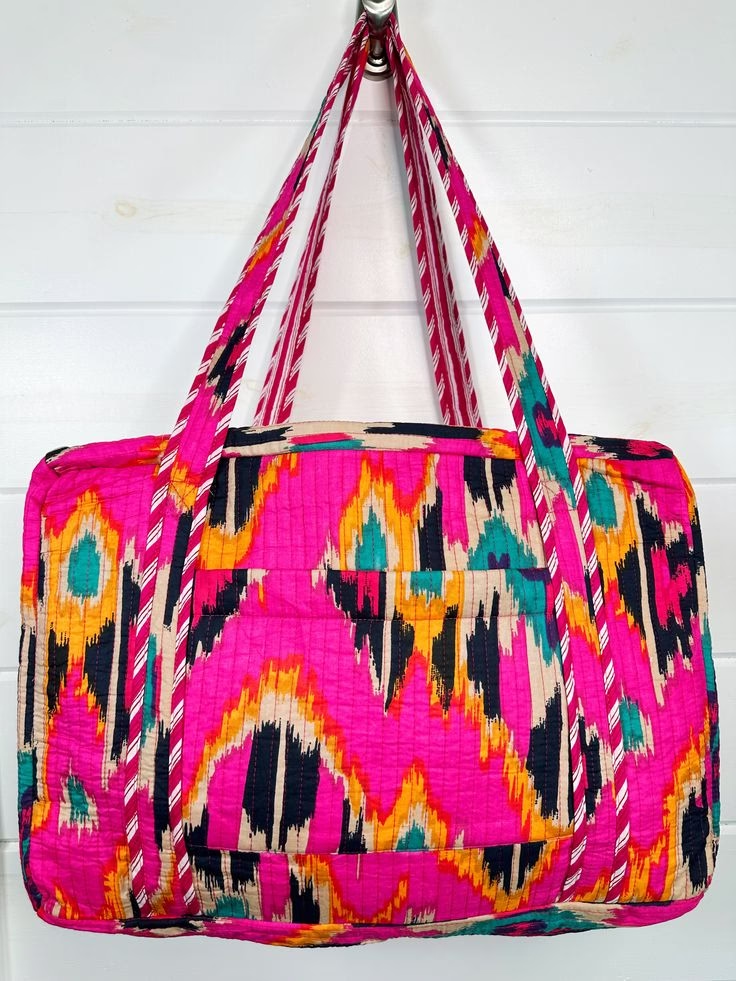
Leave a Reply